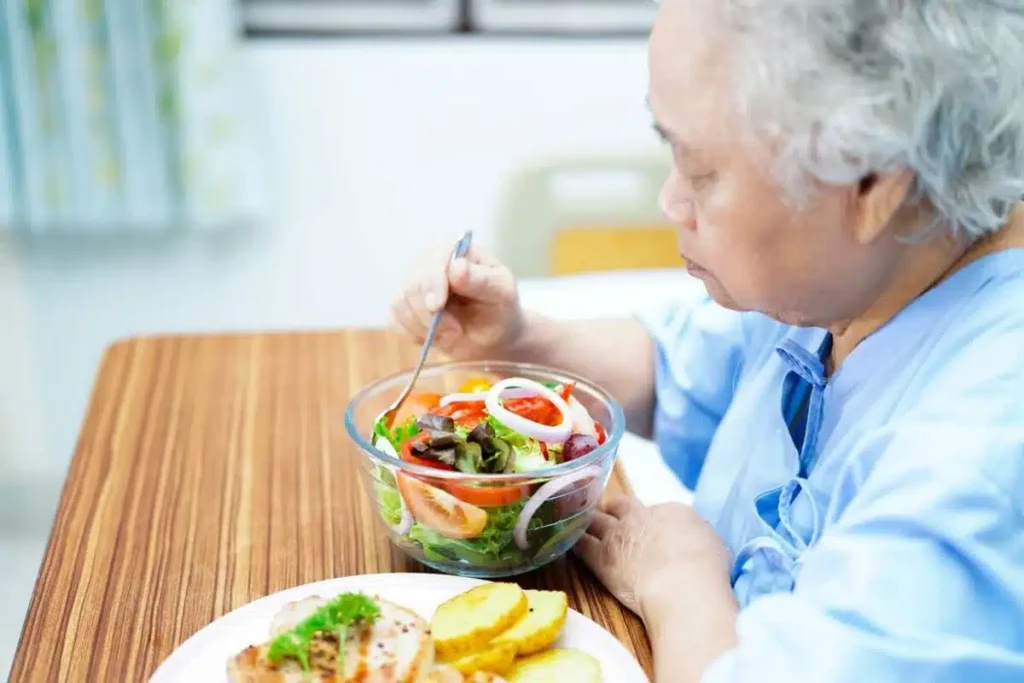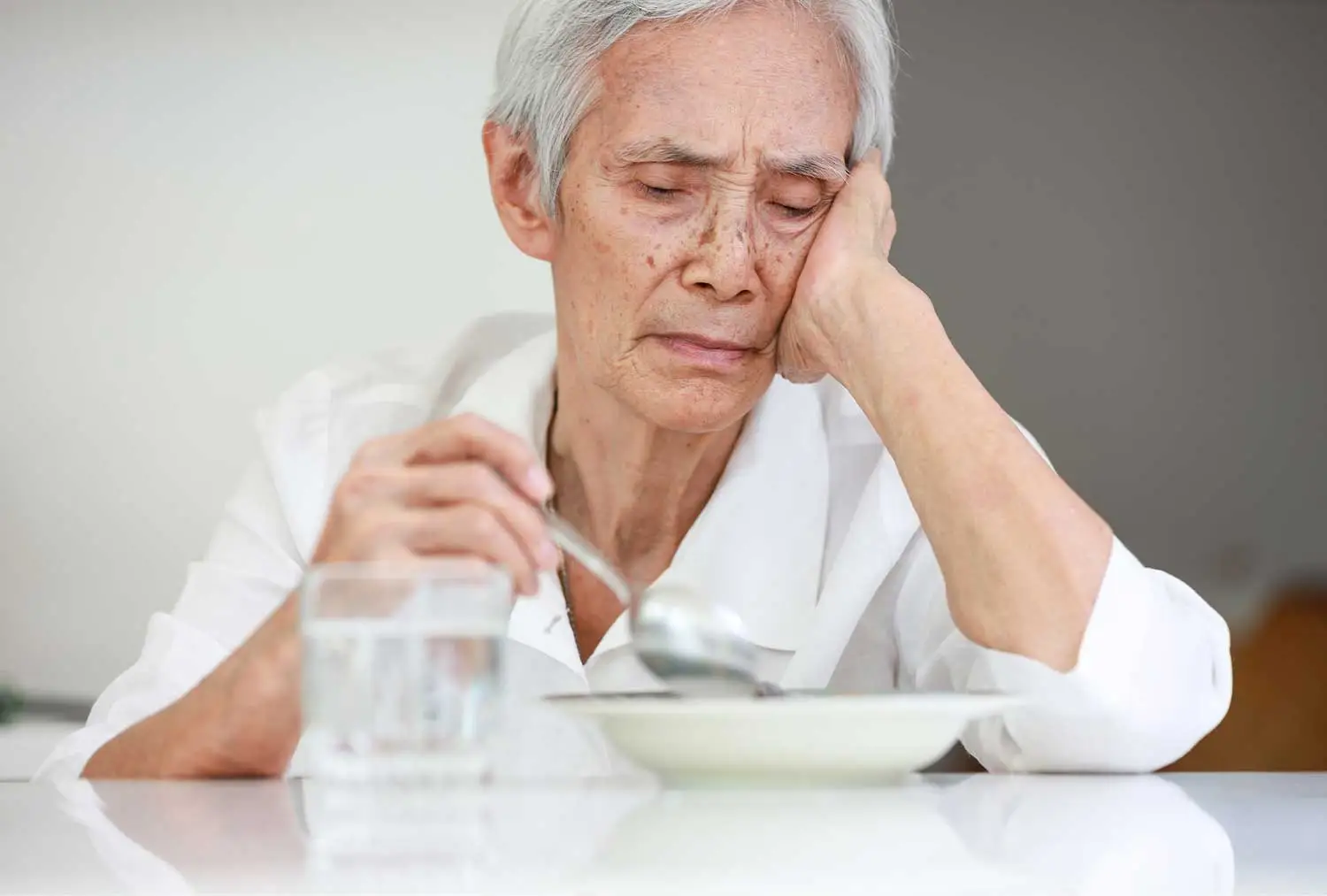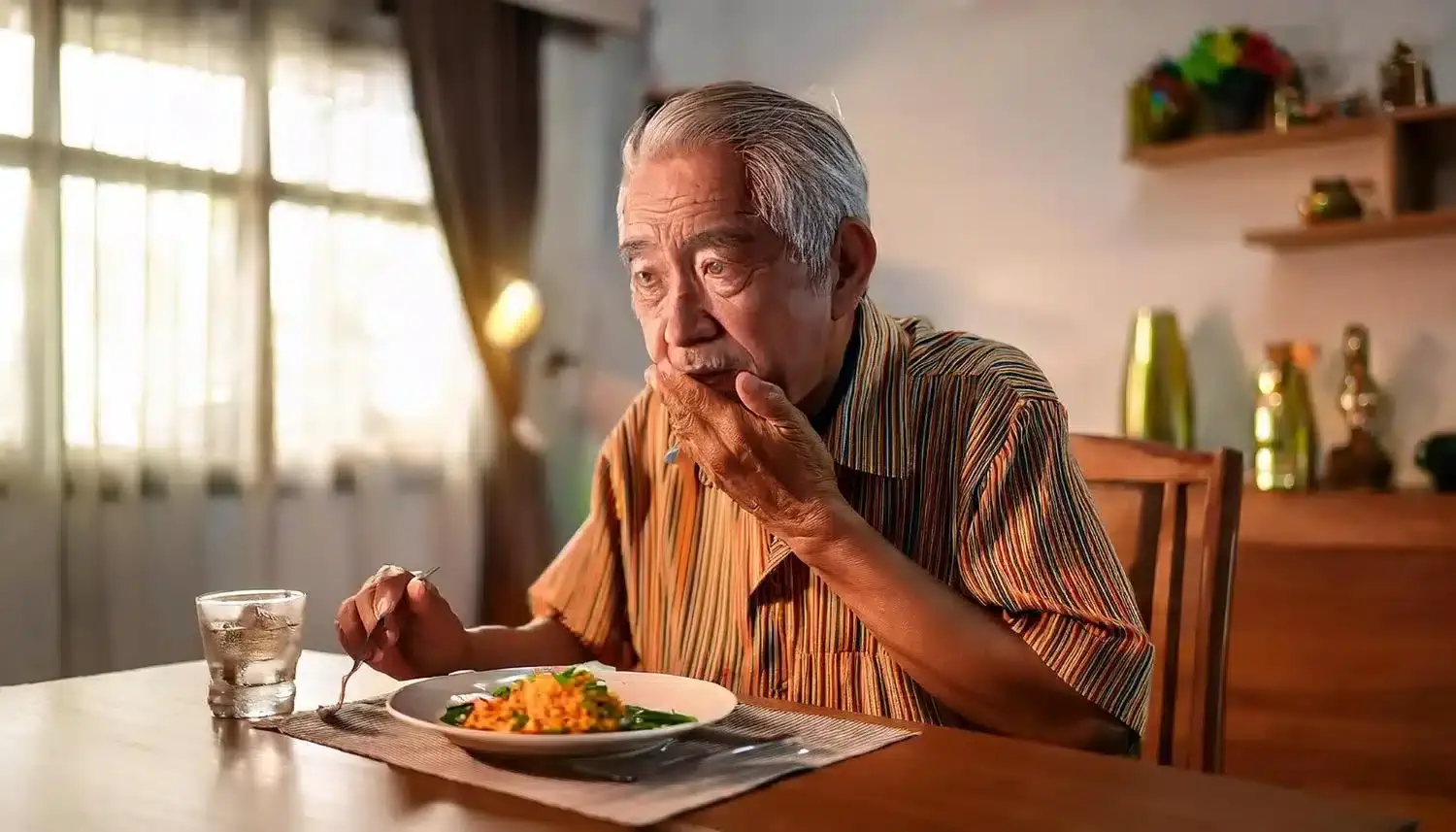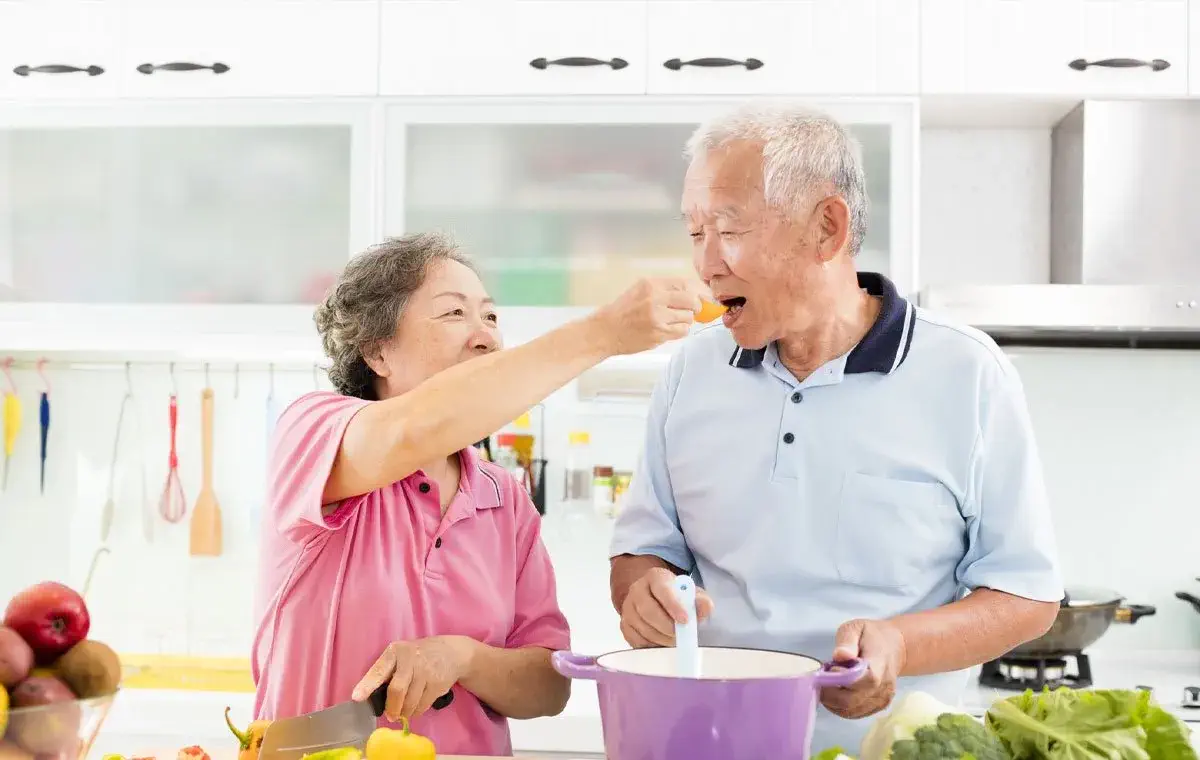
How to Detect and Prevent Malnutrition in Elderly + How to Treat
Malnutrition in elderly can be defined as a condition resulting from inadequate or unbalanced intake of nutrients in the body, which occurs due to decreased appetite, dental problems, chronic diseases, or even financial constraints. This issue poses different risks in the elderly, depending on the physical condition of each person.
Malnutrition in older adults causes a set of side effects such as severe weight loss, muscle weakness, fatigue, dizziness, chronic anorexia in the elderly, decreased cognitive function, weakened immune system, and delayed healing of wounds and diseases, which significantly threaten the health of the affected person. In advanced cases, these complications can lead to hospitalization or even an increased risk of death.
That is why it is important to know what they should eat to prevent this problem. If you want to know what are the causes of malnutrition in elderly and how it can be treated, never miss reading this article from the Human Health Magazine website. In this article from the Human Health Mag website, we are going to examine elderly malnutrition treatment and important points about the challenge of malnutrition in the elderly.
What is Malnutrition?
Malnutrition means getting too little or too much of certain nutrients, which can lead to serious health problems such as stunted growth, eye problems, pre-existing diseases or diabetes. In fact, malnutrition occurs when a person consumes too little or too much of a nutrient; So malnutrition generally includes two types of undernutrition (such as stunted growth, severe wasting or underweight) and overnutrition (such as obesity or excessive intake of calories and unhealthy fats).
According to published statistics, hundreds of millions of people around the world are involved in this disease. Some populations are more vulnerable to malnutrition due to their environment, lifestyle and resources, and their organizations and governments need to pay more attention to address the problems. In some countries, especially countries with rapid changes in lifestyle, both types of malnutrition may be observed simultaneously in the same community or even in the same family.
Despite the development of industries in recent years in the world, many countries still experience problems related to nutrition, famine and lack of nutrients needed for metabolism. This disease still manifests itself in the form of obesity, malnutrition or undernutrition among a large percentage of people. The World Health Organization recently announced through statistics that this is the largest cause of death among children in the world and is known as a threat to public health.
Of course, children are not the only ones affected by this disease and its effects are also seen in adults. Although malnutrition is harmful at any age, in the elderly, due to the slower recovery process and the presence of underlying diseases, the likelihood of serious complications is higher than others.

Risk Factors for Malnutrition in Older Adults
During the treatment period of diseases such as diabetes, various types of cancer and Alzheimer’s disease, the metabolism of the body undergoes changes. Dietary restrictions, taking certain medications or alcohol addiction may also negatively affect the elderly’s ability to absorb nutrients and their appetite. People who suffer from this disease often have problems such as vitamin and mineral deficiencies, especially iron, zinc, vitamin A and iodine, and vitamin D deficiency.
On the other hand, nutrient deficiencies in the body also occur with overeating. A person may gain weight due to excessive calorie consumption, but they do not enter vitamins and minerals sufficiently and simultaneously into their body. The reason for this should be attributed to the high calorie and fat content of foods such as fried foods and sweets, which not only do not help absorb the necessary nutrients, but also cause problems in the future.
Dementia is one of the mental diseases that has various consequences and threatens the elderly more. One of the complications of dementia is forgetting the body’s need for food or changing the eating habits of the elderly, which may lead to malnutrition. Depression, inactivity, loneliness and feelings of sadness are also among the psychological factors that lead to a decrease in appetite and, as a result, malnutrition in the elderly; So the causes of malnutrition in elderly are divided into several main categories:
Physiological causes
- Some metabolic changes such as thyroid disorders, diabetes and other diseases
- Decreased appetite due to hormonal changes or decreased physical activity
- Oral and dental problems or gum disease
- Decreased sense of taste and smell
- Swallowing disorders
Psychological causes
- Depression, anxiety and stress
- Isolation and loneliness of the elderly
- Dementia
Social causes
- Poverty and lack of sufficient financial resources to buy nutritious foods
- Problems in preparing and cooking food due to diseases and physical disabilities
Some diseases and medication use
- Chronic diseases such as diabetes, heart disease, infections and cancer
- Digestive problems
- Various types of cancer and Alzheimer’s disease
- Some medications can reduce appetite or interfere with the absorption of nutrients
What Are Main Signs of Malnutrition in an Elderly Person?
Malnutrition in elderly is not a condition that has complex symptoms. Often, by observing a few simple symptoms, you should become sensitive to the occurrence of malnutrition in the elderly, which include:
General Symptoms of Malnutrition in Older Adults
- Unwanted and severe weight loss
- Muscle weakness and muscle wasting
- Feeling of physical weakness, constant fatigue and lethargy
- Problems in healing wounds and injuries
- Decreased appetite and unwillingness to eat or eating in small amounts and at a specific time of day and night
- Decreased physical activity and exercise
- Dehydration
- Swelling in an area of the body
Specific Symptoms of Malnutrition in Older Adults
- Skin problems, brittle hair, brittle nails, swelling and chronic wounds

Effects of Malnutrition in Elderly
Malnutrition in elderly causes much more severe complications and risks than in other age groups. First of all, the body’s immune system is significantly weakened. This makes the body more vulnerable to diseases. For example, scars on the body heal very slowly or the risk of infection at the site of wounds increases significantly.
Next, we will see a decrease in bone mass index in the elderly. The story does not end there and muscle weakness also comes after the previous complications. These two complications increase the risk of hip fractures in the elderly and fractures in other parts of the body. Finally, if a way to treat malnutrition in the elderly is not found, the probability of mortality will also increase sharply; Therefore when an elderly person’s body is malnourished, if you don’t solve this problem in time, it can lead to serious health problems such as:
- Fatigue
- Unintentional weight loss
- Muscle weakness
- Memory loss
- Weak immune system
- Problems in repairing and recovering from any illness
- Appetite loss
- Delayed wound healing
- Dentition
- Depression
- Loss of muscle mass
- Falling
How to Detect Malnutrition in Elderly?
Various methods can be used to diagnose malnutrition in adults, as follows:
- Physical examinations, observation of external signs and symptoms such as weight loss, muscle weakness and skin changes by a doctor or family member
- Investigation of unwanted weight loss and calculation of body mass index (BMI)
- Blood tests to check the status of albumin, prealbumin, transferrin, micronutrients such as iron, vitamins and proteins
- Evaluation of nutritional status using assessment tools such as nutritional questionnaires and food habits
- Other methods such as physical function assessment, assessment of psychological and social status
When Should We See a Healthcare Professional to Diagnose and Treat Malnutrition?
We examined the symptoms of malnutrition in the elderly together. The main question is when should we see a doctor to diagnose or treat this disease? If you see one or more of the signs of malnutrition in an elderly person continuously for several weeks, it is definitely necessary to see a doctor for treatment. Performing periodic tests for the elderly and having regular checkups helps a lot in diagnosing diseases and preventing their possible complications.
How to Treat Malnutrition in Elderly?
We talked about this issue in detail in an article entitled elderly malnutrition treatment. When visiting a doctor, initial examinations are usually performed to examine the physical condition of the elderly. The doctor determines what nutrients the elderly body needs to treat malnutrition. In this way, a suitable diet is set up to provide these nutrients in the long term.
Having a balanced diet, increasing the number of meals and reducing the size of each meal, consuming foods rich in protein, vitamins and minerals such as meat, dairy products, vegetables and fruits are very important in treating malnutrition. In addition to the diet, the elderly may also be recommended to take multivitamin and mineral supplements.
Treating underlying diseases such as diabetes, digestive problems and heart diseases that may cause malnutrition and treating dental and oral problems are also among the treatment methods for malnutrition in elderly.
Due to the disability of most elderly people, they can be helped by family members or an elderly nurse in preparing and cooking a variety of nutritious foods. Also, by creating a pleasant environment for eating, an effective step can be taken in treating this condition. Malnutrition can be one of the symptoms of depression that must be treated. Exercising can also have a great effect on malnutrition in elderly.

How to Prevent Malnutrition in Older Adults
Here are some essential tips to help prevent malnutrition in elderly:
- Add protein sources such as meat, fish, eggs, dairy products and legumes to their diet
- In order to maintain the health of the digestive system and prevent problems such as constipation and malabsorption, include high-fiber foods such as fruits, vegetables, whole grains and legumes in the elderly’s diet
- In some cases, taking nutritional supplements such as iron, zinc, and iodine tablets can be helpful, especially for people at risk of deficiency of these nutrients
- Drinking safe water also plays an important role in preventing malnutrition, as unsafe water can lead to diseases that interfere with nutrient absorption
- Keep the elderly away from damaging psychological factors such as stress and anxiety.
- Make sure the elderly drink enough water each day. Also, remember that sugary drinks, juices, or other beverages do not hydrate the body
- Some elderly people face problems such as oral diseases or the inability to chew. In these cases, consider soft and easy to swallow foods for elderly such as soft and grated fruits, soups, puree food for elderly, and cooked foods
- Use tricks to stimulate appetite in the elderly. Brightly colored foods are very helpful in encouraging the elderly to eat
- Add these foods to the elderly’s diet: powdered milk added to natural yogurt, nuts or dried fruits with yogurt, vegetable salad or soup, boiled eggs with vegetable soup, a little grated cheese to vegetable soup, salad and pasta
- If possible, you should avoid eating cookies, croissants and other types of sweets for breakfast. Instead, you can make whole wheat toast with olive oil, tomatoes, fresh cheese and a little tuna or butter
- Prevent social isolation and loneliness by encouraging the elderly to participate in group activities for older adults. This will improve the appetite and nutrition of the elderly
Concluding Remarks
As you have seen in this article, malnutrition in elderly is a serious concern for their health, which can be caused by a lack or excessive consumption of nutrients. This problem can lead to a decrease in quality of life and the occurrence of various diseases such as fatigue, muscle weakness, involuntary weight loss, and a weakened immune system.
For this reason, the elderly should have a balanced diet rich in proteins, vitamins, and minerals to prevent this condition and maintain their health. Preventing malnutrition requires special attention to the nutritional needs of the elderly and ensuring adequate intake of quality nutrients.
To care for an elderly person with malnutrition, you must use a written plan. A plan that precisely specifies the time and amount of consumption of various nutritious foods to meet the elderly’s body’s need for protein, vitamins, and other minerals. The elderly usually do not function properly alone to treat malnutrition and must have people with them. If for any reason you are not in a position to care for an elderly person with malnutrition, we suggest seeking help from nursing homes.

Frequently Asked Questions
What are the symptoms of malnutrition in elderly?
Elderly people usually show malnutrition by severe weight loss, loss of balance when walking, non-healing wounds, and constant fatigue. Sometimes their fatigue is not compensated even by long rests and will have long-term effects.
How is malnutrition diagnosed in the elderly?
Malnutrition in older adults is diagnosed through examinations and screening tests.
What is the most common nutrient deficiency in adults?
Many elderly people face deficiencies in nutrients such as calcium, folic acid, potassium, and fiber.
Is severe malnutrition a sign of death in the elderly?
Yes. Severe malnutrition in the elderly can lead to an increased risk of serious diseases and early death.
What foods are beneficial for malnutrition in elderly?
To prevent and treat malnutrition in the elderly, it is beneficial to consume foods rich in protein such as white meat, fish, eggs, and legumes, as well as fruits and vegetables rich in vitamins and fiber such as citrus fruits and green leafy vegetables, and foods containing omega-3 and vitamin D.
